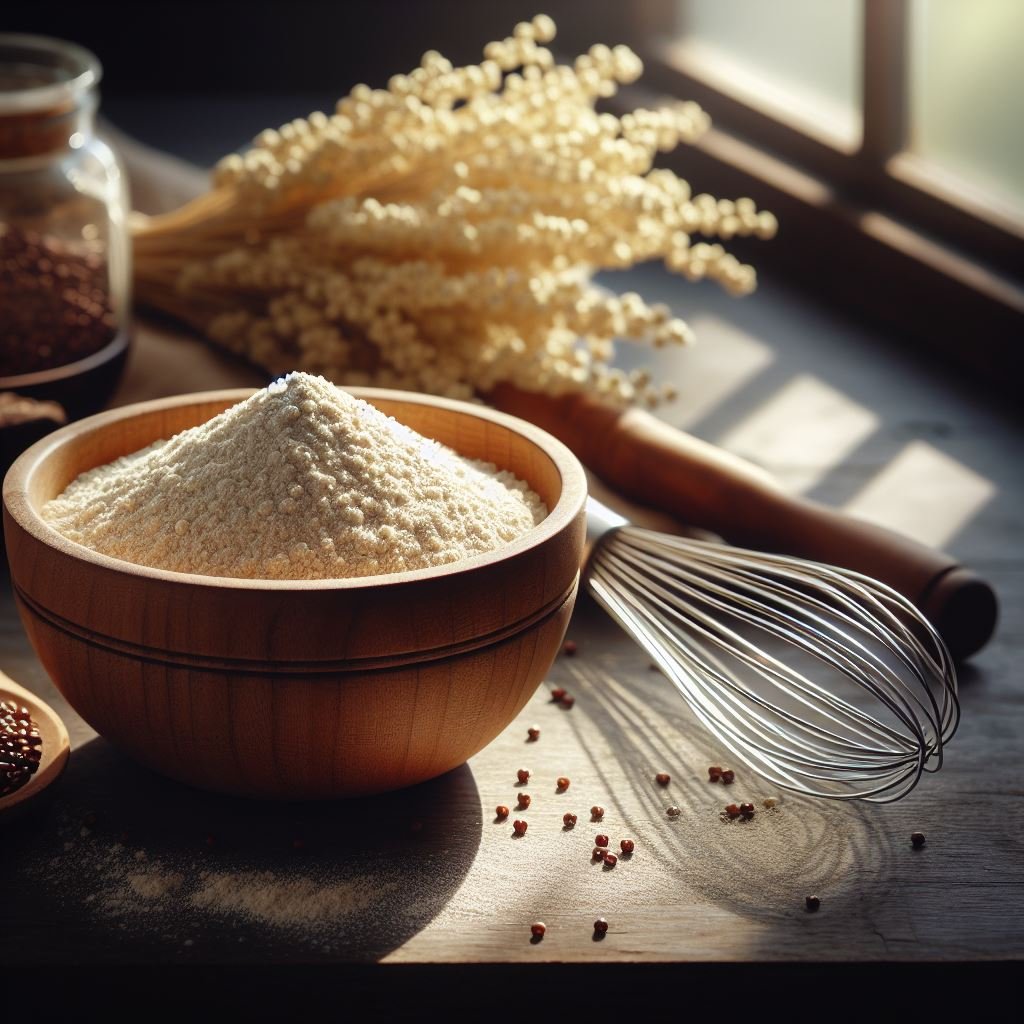Currently Empty: ₹0.00

Overview
Introducing you to the world of quinoa flour, a rapidly growing trend in the health food industry! Quinoa flour, a staple of ancient civilizations, is triumphantly returning as a superfood of the current era. We’ll delve into the reasons why quinoa flour is a pantry staple that should be kept in permanently, rather than merely the next health food fad.
The Origin and Rise of Quinoa Flour
Quinoa, the ‘mother grain’ of the Incas, has journeyed from the Andean highlands to your local supermarket. The transformation of these tiny, nutrient-packed grains into a versatile flour is nothing short of culinary magic. With the health-conscious wave riding high, the market for quinoa flour is booming, reflecting a global shift towards healthier, more sustainable food choices.
The Nutrition Facts of Quinoa Flour
Quinoa flour is a nutritional powerhouse. It is superior than conventional wheat flour since it is enhanced with vital vitamins and minerals, fiber, and protein. What really makes it stand out is its high protein and gluten-free content, which makes it an ideal component for dieters and health fanatics both.
Using Quinoa Flour in Cooking
Not only is quinoa flour healthy, but it also has a plethora of culinary applications. Quinoa flour adds a distinct, nutty flavor to recipes, whether you’re thickening a hearty stew, baking rustic bread, or making pancakes. It also makes a great replacement for wheat flour for those who want to explore, adding a healthier touch to your favorite recipes.
Dietary requirements and Quinoa flour
Quinoa flour is a godsend to people who follow particular diets. For those who are gluten intolerant or celiac disease sufferers, its gluten-free composition is a lifeline. It’s also great for vegetarians, vegans, and people controlling their weight or diabetes because of its high protein and fiber content.
Environmental Impact and Sustainability
Quinoa is beneficial to the environment as well as to you. Quinoa requires less water to cultivate than many other crops, making it a comparatively low-impact crop. Selecting quinoa flour is an environmentally friendly decision that promotes moral farming methods.
What to Look for and Where to Buy
Quinoa flour is available on Amazon and Roots stores under the Queens Quinoa band name. Look for organic and non-GMO labels while making purchases to guarantee quality. When you get home, bear in mind that appropriate storage is essential to preserve the freshness of your quinoa flour. Store it in a cool, dry place.
Conclusion
Quinoa flour is a sustainable, nutrient-dense, and adaptable choice for anyone trying to improve their diet—it’s not just a trendy substitute. In your upcoming culinary endeavor, consider quinoa flour whether you’re an experienced chef or an inquisitive food enthusiast.
Frequently Asked Questions
-
What is quinoa flour made of? Quinoa flour is simply ground quinoa grains.
-
Can quinoa flour replace wheat flour in recipes? Yes, it’s a great gluten-free alternative but may alter texture and flavor.
-
Is quinoa flour suitable for people with gluten intolerance? Absolutely, it’s naturally gluten-free.
-
How does quinoa flour affect the texture and taste of baked goods? It gives a slightly nutty flavor and denser texture.
-
What are the best ways to store quinoa flour? In a cool, dry place, away from direct sunlight and moisture.

